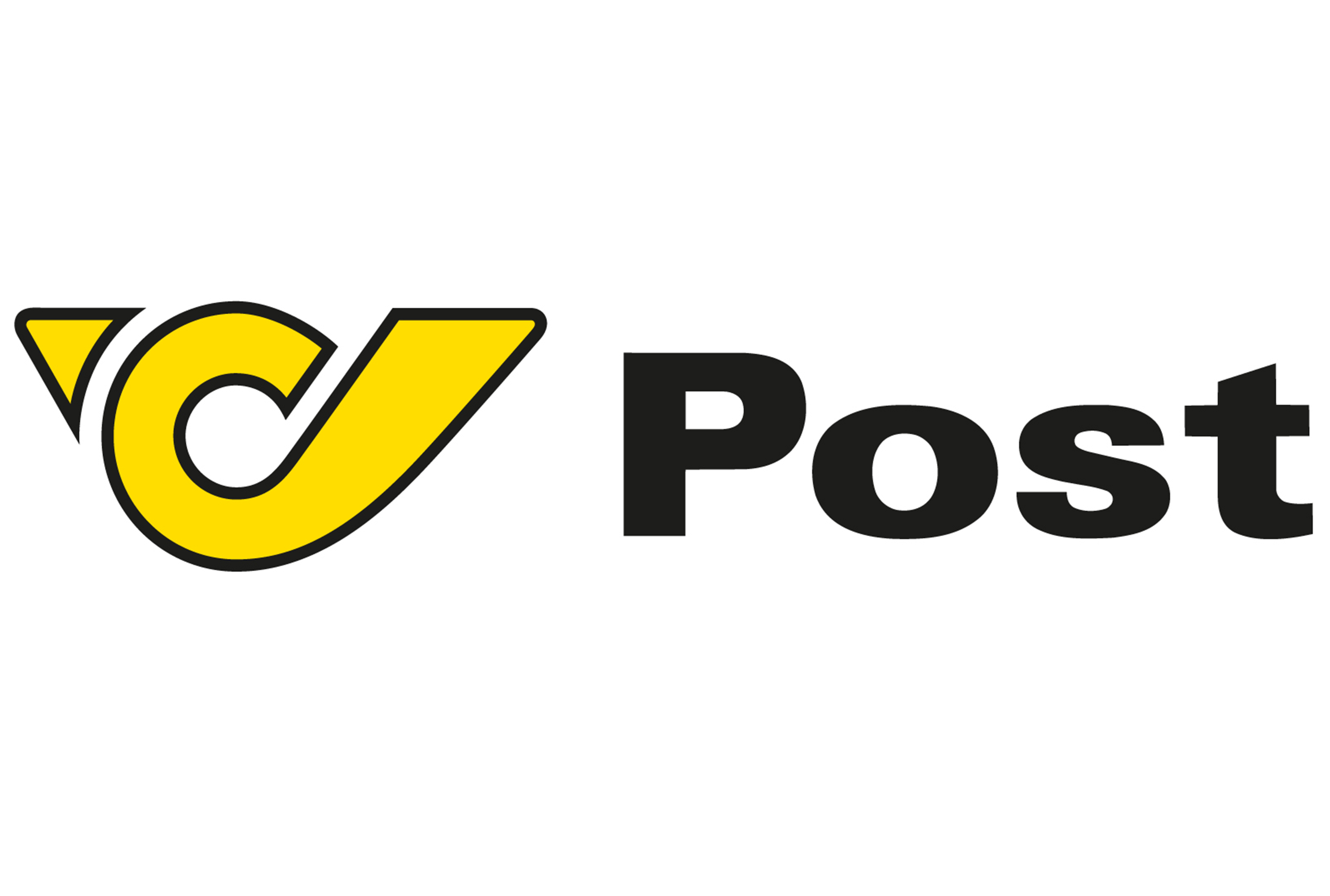
Millions of Americans are increasingly recognizing the incredible value of Health Savings Accounts (HSAs) as a powerful tool. These tax-advantaged accounts are not just for covering immediate out-of-pocket healthcare costs; they are also a smart way to plan for a more financially secure future, especially when facing rising medical expenses in retirement.
HSAs are truly unique, offering a rare combination of tax benefits that can significantly reduce your healthcare burden while simultaneously boosting your long-term savings. With a bit of strategic planning and an understanding of how these accounts work, you can transform your HSA from a simple savings vehicle into a cornerstone of your financial health. It’s all about making your healthcare dollars work harder for you, year after year.
In this comprehensive guide, we’ll walk you through simple yet highly effective strategies to maximize your HSA benefits. From ensuring you’re making the most of your deposits to smart investment tactics, we’ll break down everything you need to know. Let’s dive into how you can unlock the full potential of your Health Savings Account and build a robust financial future.

1. Understanding the Core Benefits: The Triple Tax Advantage of HSAs
At the heart of a Health Savings Account’s appeal lies its extraordinary “triple tax advantage,” a benefit rarely found in other savings or investment vehicles. This powerful combination makes HSAs an unparalleled tool for managing healthcare costs and enhancing financial security. Essentially, an HSA is a tax-advantaged investment vehicle designed to allow you to set aside pre-tax money specifically for future health expenses.
Firstly, your contributions to an HSA are made with pre-tax dollars. This means that any money you deposit, whether through payroll deductions or as self-funded contributions, effectively reduces your taxable income for the year. For those contributing via employer payroll deductions, this benefit extends to avoiding payroll taxes as well, further sweetening the deal and increasing your immediate tax savings.
Secondly, the funds within your HSA grow entirely tax-deferred. Unlike traditional savings accounts where interest or investment gains are taxed annually, any earnings from investments within your HSA — whether from mutual funds, stocks, or other options — are not taxed as long as they remain in the account. This allows your money to compound and grow significantly over time, accelerating your wealth-building potential for healthcare needs.
Thirdly, and perhaps most importantly, withdrawals from your HSA are 100% tax-free, provided they are used for qualified medical expenses. This means you never pay taxes on the money you put in, the money it earns, or the money you take out for eligible healthcare costs. This triple benefit provides a level of financial efficiency that even popular retirement accounts like 401(k)s and Roth IRAs often cannot match, making the HSA a truly unmatched investment for healthcare savings.
Read more about: Kiplinger’s Guide: 12 Essential Strategies for Americans to Navigate and Thrive Through an Economic Recession

2. Maximizing Annual HSA Contributions: Boosting Your Savings Potential
One of the most straightforward and impactful ways to get the most out of your Health Savings Account is by consistently making the maximum annual contribution. The more money you deposit into your HSA, the more it has the opportunity to earn and grow tax-free over time. This foundational strategy can significantly boost your account’s earnings and its long-term value, setting you up for substantial savings.
Understanding the contribution limits is crucial for effective planning. For 2025, individuals can contribute up to $4,300, while families have a limit of $8,550. These limits are set to increase slightly in 2026, reaching $4,400 for individuals and $8,750 for families. Additionally, if you are aged 55 or older, you are eligible to make an extra $1,000 “catch-up contribution” each year, providing an excellent opportunity to bolster your savings as you approach retirement.
These contributions directly reduce your taxable income. If your employer offers payroll deductions for HSA contributions, the money is taken out before taxes, providing an immediate tax benefit. If you contribute independently, you can deduct these amounts from your taxable income when filing taxes. This immediate tax relief, combined with tax-free growth, makes maximizing your contributions a powerful strategy for reducing your current tax liabilities while building a future healthcare fund.
Considering the escalating costs of healthcare, the importance of maximizing your HSA cannot be overstated. Experts project that an average couple retiring in 2025 might need as much as $350,000 for healthcare expenses in retirement. By consistently contributing the maximum to your HSA, you are proactively building a substantial, tax-advantaged reserve to meet these future medical needs, protecting your other retirement savings from hefty medical bills and ensuring greater financial peace of mind.

3. Navigating Eligibility: Who Can Use a Health Savings Account?
While Health Savings Accounts offer incredible benefits, not everyone is eligible to contribute to one. Understanding the specific criteria is the essential first step to participating and leveraging this powerful financial tool. The primary requirement for HSA eligibility is enrollment in a High-Deductible Health Plan (HDHP).
An HDHP is precisely what it sounds like: a health insurance plan that typically features lower monthly premiums but comes with higher deductibles compared to traditional health insurance plans. The IRS sets specific definitions for what constitutes an HDHP each year. For 2025, a plan qualifies as an HDHP if it has a minimum deductible of $1,650 for individual coverage and $3,300 for family coverage. It also has maximum out-of-pocket limits, which are $8,300 for individuals and $16,600 for families in 2025.
Beyond being enrolled in an HDHP, there are several other crucial eligibility criteria you must meet. You cannot be claimed as a dependent on anyone else’s tax return, ensuring that you are the primary beneficiary of the account. Additionally, you must not be enrolled in Medicare, as HSAs are designed for those still actively managing their healthcare costs before Medicare eligibility.
It’s also important that you are not enrolled in any other non-HSA-eligible health plan, such as a full-purpose Flexible Spending Account (FSA) or a Health Reimbursement Arrangement (HRA). Certain limited-purpose FSAs for dental or vision, or specific long-term care and disability insurance, are generally excluded from this restriction. Once you’ve established your HSA and made contributions, you can use the funds for qualified medical expenses even if you later lose eligibility to contribute, offering lasting flexibility for your healthcare savings.

4. Distinguishing HSAs from FSAs: Key Differences and Advantages
Many individuals frequently confuse Health Savings Accounts (HSAs) with Flexible Spending Accounts (FSAs), as both offer tax advantages for medical expenses. However, these two accounts differ significantly in several key ways, and understanding these distinctions is crucial for maximizing your healthcare savings strategy. Recognizing these differences will help you appreciate the unique advantages an HSA offers, especially for long-term financial planning.
One of the most critical distinctions lies in the “use it or lose it” rule. FSAs are typically subject to a stringent deadline where funds must be spent within the plan year or a short grace period, otherwise, they are forfeited. In stark contrast, HSA funds are not tied to such deadlines; any unused funds roll over indefinitely from one year to the next. This ability to accumulate savings without a deadline makes HSAs an incredibly effective way to build a substantial reserve for future healthcare expenses, whether they arise next month or decades down the road.
Another major difference is ownership and portability. FSAs are generally owned by your employer, meaning that if you change jobs, you often lose any remaining funds in the account. HSAs, on the other hand, are individually owned accounts. This means your HSA remains with you, regardless of changes in employment or health insurance coverage. This portability transforms your HSA into a long-term financial asset, providing continuity and control over your healthcare savings throughout your career and into retirement.
HSAs also boast more generous contribution limits compared to most FSAs, allowing for greater savings potential. Beyond the rollover and portability advantages, HSAs also offer the unique triple tax benefit—contributions are tax-deductible (or pre-tax), investment growth is tax-free, and qualified withdrawals are tax-free. This comprehensive tax advantage sets HSAs apart, providing a more robust and flexible solution for managing both immediate and future healthcare costs compared to FSAs.

5. Growing Your HSA Through Tax-Free Investments
Many HSA holders mistakenly treat their accounts as simple savings accounts, leaving their funds in cash. However, a significant benefit of HSAs, and a key strategy for maximizing their value, is the ability to invest your contributions. Investing your HSA funds can help you build substantial wealth tax-free, transforming it from a mere savings vehicle into a powerful financial tool akin to a retirement account.
Once your HSA balance meets a certain minimum requirement, which is often around $2,100, you could become eligible to invest some of your savings. Many HSA providers offer a range of investment options, including mutual funds, exchange-traded funds (ETFs), stocks, and bonds. By choosing to invest, you allow your funds to grow through market appreciation, generating potentially much greater returns than traditional savings interest.
The real magic here is the tax-free growth. Any investment gains earned within your HSA are not taxed. This means your money compounds faster, unhindered by annual tax liabilities. When you eventually withdraw these funds for qualified medical expenses, those withdrawals are also completely tax-free. This combination of tax-free growth and tax-free withdrawals for eligible expenses makes investing your HSA an incredibly efficient way to accumulate funds for future healthcare costs.
Remarkably, studies have shown that only a small percentage of HSA participants — around 13% — actually invest their assets beyond cash. This indicates a widespread missed opportunity for long-term growth. Investing within your HSA also serves as an effective hedge against inflation, helping to protect the purchasing power of your funds over time. Consult with your provider to explore the investment options available and align them with your financial goals and risk tolerance.
Read more about: Decoding Your Wealth: What the Average 60-Something American Has in Net Worth and How You Compare

6. Leveraging Employer Contributions to Your HSA
Many forward-thinking companies are recognizing the immense value of Health Savings Accounts for their employees and offer contributions as part of their benefits package. If your employer provides this perk, it’s a fantastic opportunity to boost your HSA balance without directly impacting your take-home pay. Leveraging these employer contributions is a smart strategy to maximize your account’s growth potential.
It’s important to remember that any contributions made by your employer count towards your annual IRS contribution limit. For example, if the individual limit is $4,300 in 2025 and your employer contributes $1,000, you can then personally contribute an additional $3,300 to reach the maximum. Being aware of this combined limit helps ensure you don’t over-contribute, while still taking full advantage of the benefit.
These employer contributions effectively free up additional funds in your personal budget. The money your employer puts into your HSA means you might not need to contribute as much from your own paycheck to reach the maximum. This can free up cash flow that you can then allocate to other critical savings vehicles, such as an Individual Retirement Account (IRA) or a 401(k) plan, further diversifying and strengthening your overall financial portfolio.
Moreover, if your employer facilitates HSA funding through employee payroll deductions, you may also benefit from saving on FICA taxes (Social Security and Medicare taxes) on those contributions. This adds another layer of tax advantage beyond the federal income tax deduction, increasing the overall financial benefit of contributing through work. Always check with your HR department to understand the specifics of your employer’s HSA contribution policy and how it can best support your financial goals.
Read more about: Beyond the Average: A Comprehensive Guide to Understanding and Planning for the $172,500 Healthcare Costs Facing Retirees

7. Strategic Transfers: Making a One-Time IRA to HSA Rollover
For those looking to give their Health Savings Account a significant jumpstart, particularly if you’re just establishing an HSA or preparing for retirement, there’s a little-known but powerful strategy involving a one-time transfer from an Individual Retirement Account (IRA) or Roth IRA. This “once-in-a-lifetime rule” allows you to move funds into your HSA without incurring penalties, making it an excellent way to quickly boost your savings.
This special provision allows you to transfer a lump sum from your IRA into your HSA. While the annual HSA contribution limits still apply to this transfer (meaning you can’t exceed the maximum for your individual or family coverage for the year), it offers a unique opportunity to front-load your HSA. It’s particularly beneficial if you have existing funds in an IRA that you’d like to redirect specifically for future healthcare costs with the added HSA tax advantages.
The immediate impact of such a transfer can be substantial. For a new HSA, it can help you quickly meet the minimum balance often required by providers to begin investing your funds. For those nearing retirement, it provides a strategic way to maximize your HSA balance, creating a larger, tax-advantaged pool of money specifically earmarked for medical expenses that tend to increase in later life, thereby protecting your other retirement savings.
It’s crucial to consult with a financial advisor and your HSA provider before executing such a transfer, as there are specific rules and limitations to ensure you remain compliant with IRS regulations. This one-time opportunity can be a smart move, but careful planning is essential. It provides a unique path to accelerate the growth of your HSA, making it a more robust resource for covering healthcare costs both now and in your retirement years.
Now that we’ve covered the foundational aspects and immediate benefits of your Health Savings Account, it’s time to look at some advanced strategies and long-term planning techniques. These approaches can significantly amplify your HSA’s value, turning it into an even more formidable asset for your financial future, especially as you plan for healthcare expenses in retirement.

8. Delaying Reimbursement to Capitalize on Tax-Free Account Growth
One of the most powerful yet often underutilized strategies for maximizing your HSA’s long-term growth is delaying reimbursement for qualified healthcare expenses. Unlike many other accounts, the IRS provides remarkable flexibility regarding when you reimburse yourself, allowing you to effectively “bank” your receipts for years, or even decades, before withdrawing funds. This unique feature means there’s no required timeframe to pay yourself back for medical costs.
Here’s how this works to your advantage: you intentionally pay for current healthcare expenses out of your pocket, rather than immediately drawing from your HSA. Crucially, you save every single receipt and meticulous documentation for these qualified medical costs. By doing so, you allow the funds within your HSA to continue growing untouched, benefiting from tax-free investment growth and compounding interest over an extended period.
The real genius of this strategy lies in its ability to magnify your savings. Imagine your HSA balance compounding tax-free for 10, 20, or even 30 years. When you finally decide to withdraw, you can access those significantly larger funds tax-free to reimburse yourself for those past, documented expenses. This approach leverages the power of compounding to build a much more substantial financial reserve than if you were to deplete your HSA for every immediate expense.
This strategic delay ensures that your HSA is working as hard as possible for you, transforming it into a robust, long-term savings vehicle. It gives you immense financial flexibility down the line, allowing you to access a larger pool of tax-free money when you might need it most, such as during retirement when healthcare costs typically rise. Just remember, the golden rule here is unwavering diligence in keeping all your receipts and documentation; they are your proof should the IRS ever audit your account.

9. Understanding Portability and Individual Ownership
A key advantage that sets Health Savings Accounts apart from many other employer-sponsored benefits, like Flexible Spending Accounts (FSAs), is their exceptional portability and individual ownership. Unlike FSAs, which are typically owned by your employer and can be lost if you change jobs, your HSA is your personal asset. This means you maintain full control over your account, regardless of changes in your employment status or health insurance coverage.
This individual ownership transforms your HSA into a long-term financial asset, not just a temporary spending account tied to your current job. The funds you’ve diligently saved and invested within your HSA remain with you, providing continuity and control over your healthcare savings throughout your entire career and well into retirement. You never have to worry about forfeiting unused funds simply because you’ve moved to a new company or health plan.
This portability empowers you to build a continuous, uninterrupted stream of tax-advantaged savings specifically for healthcare. It allows you to plan with confidence, knowing that the money you’ve allocated for medical expenses will always be accessible, offering stability even in the face of career transitions. Your HSA literally travels with you, serving as a constant pillar of your financial health.
By understanding and appreciating the portable nature of your HSA, you can view it as a foundational component of your personal wealth, rather than just an employee perk. This ensures that your efforts in saving and investing are protected and will continue to benefit you, providing a secure resource for future medical needs whenever and wherever they arise. It’s a powerful testament to the long-term vision HSAs offer.
Read more about: Beyond the Hype: Dissecting the Complex Reasons Why Americans Are Buying Fewer Tablets and What This Means for the Future of Digital Devices

10. Consolidating Multiple HSAs for Greater Growth and Simplicity
In today’s dynamic job market, it’s not uncommon for individuals to accumulate multiple Health Savings Accounts over the years, perhaps from switching employers or health plans. While having several HSAs isn’t inherently problematic, actively consolidating them into a single account can be a significantly beneficial strategy for maximizing growth and simplifying your financial management. This move can unlock several advantages that make your HSA work harder for you.
One of the primary benefits of combining your HSAs is the potential to meet the minimum balance required by some providers to begin investing your funds. Many HSA administrators require a certain threshold, often around $2,100, before you can move money from a cash balance into investment options like mutual funds or ETFs. By consolidating smaller accounts, you can quickly reach this threshold, allowing your combined savings to start growing through market appreciation.
Beyond accelerating your investment potential, managing a single HSA significantly streamlines your financial planning and oversight. Instead of tracking multiple accounts, statements, and login credentials, you have a unified view of your entire healthcare savings portfolio. This simplification makes it easier to monitor your investments, review your balance, and ensure you’re maximizing your HSA’s earning potential without the added complexity of juggling several accounts.
Consolidation also allows for better strategic allocation of your funds, as you can implement a comprehensive investment strategy across a larger, single pool of money. This unified approach can lead to more efficient growth and a clearer understanding of your overall healthcare savings trajectory. If you find yourself with more than one HSA, consider exploring a transfer to consolidate them, making your financial life simpler and your savings stronger.
Read more about: Unlock Your Financial Potential: A Comprehensive Guide to Budgeting Methods That Actually Work

11. Navigating Qualified Medical Expenses for Tax-Free Withdrawals
A cornerstone of the Health Savings Account’s triple tax advantage is that withdrawals are 100% tax-free, but this crucial benefit only applies when funds are used for “qualified medical expenses.” Understanding precisely what falls under this definition is paramount to maintaining the tax-free status of your withdrawals and avoiding costly penalties. It’s important to dedicate your HSA exclusively to these approved health-related costs whenever possible.
The IRS defines a wide array of services and treatments as qualified medical expenses. These include fundamental services like doctor visits, dental care, and vision-related expenses such as glasses or contact lenses. Beyond the basics, HSAs can cover family-planning costs, hospital stays, physical therapy, prescription drugs, insulin, lab fees, and even over-the-counter (OTC) medicines. Specialized items such as acupuncture, ambulance services, flu shots, vaccines, vasectomies, crutches, medical alert bracelets, psychiatric care, and orthodontics are also typically eligible.
However, there’s a vital caveat to remember: you can only use your HSA funds for expenses that are *not* covered or reimbursed by your health insurance plan or any other source. If an expense has already been paid for by your insurer, you cannot then use your HSA to reimburse yourself for that same cost. This prevents double-dipping and ensures that the HSA serves as a complement to, rather than a duplicate of, your existing coverage.
Strict adherence to the qualified medical expense rule is essential. Using HSA funds for non-qualified expenses before age 65 will not only eliminate the tax benefits but will also trigger ordinary income tax on the withdrawn amount, plus a hefty 20% early withdrawal penalty. By carefully allocating your HSA funds only to eligible healthcare costs, you ensure that every dollar you withdraw remains entirely tax-free, preserving the integrity and value of your account for years to come.
Read more about: Unmasking the Truth: 10 Costly Retirement Lies You Need to Stop Believing for a Secure Future

12. Avoiding Common Pitfalls to Preserve Your HSA’s Value
While Health Savings Accounts offer an abundance of benefits, certain missteps can significantly limit their effectiveness or lead to unwelcome penalties. Being aware of these common pitfalls and proactively avoiding them is crucial for truly maximizing the value of your HSA and ensuring it remains a powerful tool in your financial arsenal. Protecting your HSA from these errors can save you both money and headaches in the long run.
One of the most frequently missed opportunities is not maximizing annual contributions. Failing to contribute the full amount allowed each year means you’re leaving valuable tax advantages and long-term savings potential on the table. Each dollar not contributed is a dollar that won’t benefit from pre-tax savings, tax-free growth, and tax-free withdrawals, significantly diminishing the account’s compounding power over time.
Another significant pitfall involves using HSA funds for non-qualified expenses. As discussed, withdrawals for anything other than approved medical costs, particularly if you’re under age 65, will incur a 20% early withdrawal penalty in addition to being taxed as ordinary income. This steep price can quickly erode the benefits of your HSA, making it imperative to verify an expense’s eligibility before making a withdrawal for non-medical reasons.
Furthermore, many HSA participants make the mistake of missing out on investment opportunities. A study revealed that only a small percentage—around 13%—of HSA holders invest their assets beyond cash. Leaving funds solely in cash drastically limits the account’s growth potential, especially when you consider the long-term, tax-free compounding available through investments. Regularly reviewing your investment options with your provider can prevent this loss in value. Lastly, disorganizing receipts and records is a critical oversight. Failing to keep detailed documentation of medical expenses and reimbursements can create complications during tax season or, worse, in the event of an IRS audit. Without proper proof, your withdrawals could be deemed non-qualified, subjecting your funds to unwarranted income tax and penalties. Meticulous record-keeping is not just good practice; it’s essential for compliance and leveraging strategies like delayed reimbursement.

13. Strategically Using Your HSA as a Powerful Retirement Tool
Beyond its immediate utility for covering current medical expenses, one of the most compelling advantages of a Health Savings Account is its incredible potential as a powerful retirement planning tool. Many financial experts view the HSA as a ‘stealth IRA’ or a ‘super 401(k)’ due to its unique triple tax advantage, which can significantly bolster your financial security in later life. It’s an indispensable resource for confronting the escalating costs of healthcare in retirement.
Consider this sobering fact: according to Fidelity, the average couple retiring in 2025 might need as much as $350,000 for healthcare expenses during retirement. This staggering figure underscores the necessity of a dedicated, tax-advantaged fund. By strategically using your HSA, you can build a substantial reserve specifically earmarked for these costs, thereby protecting your other taxable retirement accounts, like 401(k)s and traditional IRAs, from being depleted by medical bills.
The optimal strategy for leveraging your HSA in retirement often involves a proactive approach: pay for current medical expenses out of your pocket whenever feasible. As we discussed with delayed reimbursement, this allows your HSA balance to grow tax-deferred through investments. This cultivates a larger, untouched nest egg that can then be accessed tax-free for qualified medical expenses in retirement, maximizing your investment growth over decades.
By treating your HSA as a long-term investment vehicle rather than just a checking account for medical bills, you transform it into a robust supplemental retirement account. This approach not only provides a dedicated fund for inevitable healthcare costs but also offers peace of mind, knowing you have a tax-efficient way to manage what often becomes one of the largest expenses in your golden years. It’s a cornerstone of comprehensive financial health.
Read more about: Beyond the Average: A Comprehensive Guide to Understanding and Planning for the $172,500 Healthcare Costs Facing Retirees

14. Post-65 Rules: Unlocking Enhanced Flexibility for Your HSA
The flexibility and benefits of your Health Savings Account become even more remarkable once you reach the age of 65. At this significant milestone, the rules governing your HSA evolve, offering enhanced versatility that positions it as an even more powerful component of your retirement financial plan. Understanding these post-65 provisions is key to fully utilizing your accumulated savings.
Once you turn 65, the stringent 20% penalty for withdrawing HSA funds for non-qualified expenses is completely waived. While these non-medical withdrawals will still be subject to ordinary income tax, similar to distributions from a traditional IRA or 401(k), the absence of the penalty provides much greater freedom. This means your HSA effectively transforms into an additional retirement income stream that can be used for any purpose, not just healthcare.
However, the primary tax-free benefit for qualified medical expenses remains intact, and its scope actually broadens. After age 65, you can continue using your HSA funds tax-free for a wide range of eligible healthcare costs, including Medicare premiums, long-term care insurance premiums, and out-of-pocket medical, dental, and vision expenses. This ensures that a substantial portion of your retirement healthcare burden can be met with tax-free dollars.
Furthermore, unlike traditional retirement accounts such as 401(k)s and IRAs, HSAs are not subject to Required Minimum Distributions (RMDs). This exceptional feature means you are never forced to withdraw money from your HSA if you don’t need it, allowing your balance to continue growing tax-deferred indefinitely. This makes the HSA an incredibly versatile and enduring asset for your financial well-being throughout your entire retirement.

15. The Importance of Essential Record-Keeping Practices
While the strategies for maximizing your Health Savings Account are powerful, their successful execution fundamentally relies on one critical, yet often overlooked, practice: meticulous record-keeping. Whether you’re planning for delayed reimbursements, preparing for tax season, or simply ensuring compliance, maintaining thorough and organized records of all your medical expenses and HSA transactions is absolutely essential. This foundational practice safeguards your benefits and avoids potential complications.
For those employing the strategy of delayed reimbursement, accurate record-keeping is not just advisable, it is non-negotiable. You can reimburse yourself for qualified expenses years later, but only if you have the original receipts and detailed documentation to prove the expense was incurred after your HSA was established and was indeed qualified. Without this proof, any subsequent withdrawals for reimbursement could be challenged by the IRS, potentially leading to income tax and penalties.
Beyond delayed reimbursements, maintaining detailed records simplifies your life during tax season. In the event of an IRS audit, having clear, organized documentation of all your qualified medical expenses and HSA withdrawals provides essential proof, preventing your funds from being subjected to unwarranted penalties or taxes. This due diligence ensures that you can always demonstrate that your HSA funds were used appropriately, preserving their tax-free status.
Effective record-keeping also empowers better financial planning and budgeting. By tracking how your HSA funds are utilized over time, you gain a clearer understanding of your healthcare spending patterns and the growth of your account. This insight allows you to make more informed decisions about future contributions, investments, and overall healthcare management. Treat your receipts and statements as valuable financial documents, safeguarding your HSA for maximum benefit.
Read more about: 12 Critical Driving Mistakes: What Police Officers Instantly Spot to Issue You a Traffic Ticket
Unlocking the full potential of your Health Savings Account requires more than just understanding the basics; it demands a proactive, strategic approach to contributions, investments, and withdrawals. By embracing these advanced strategies—from delaying reimbursements to meticulous record-keeping, and by recognizing the HSA’s unique role as a portable, long-term retirement asset—you can transform your account into a powerful engine for enduring financial health. Your HSA isn’t just a place to save; it’s a dynamic tool to secure your future, offering unparalleled tax advantages and peace of mind for your healthcare journey, today and tomorrow.



